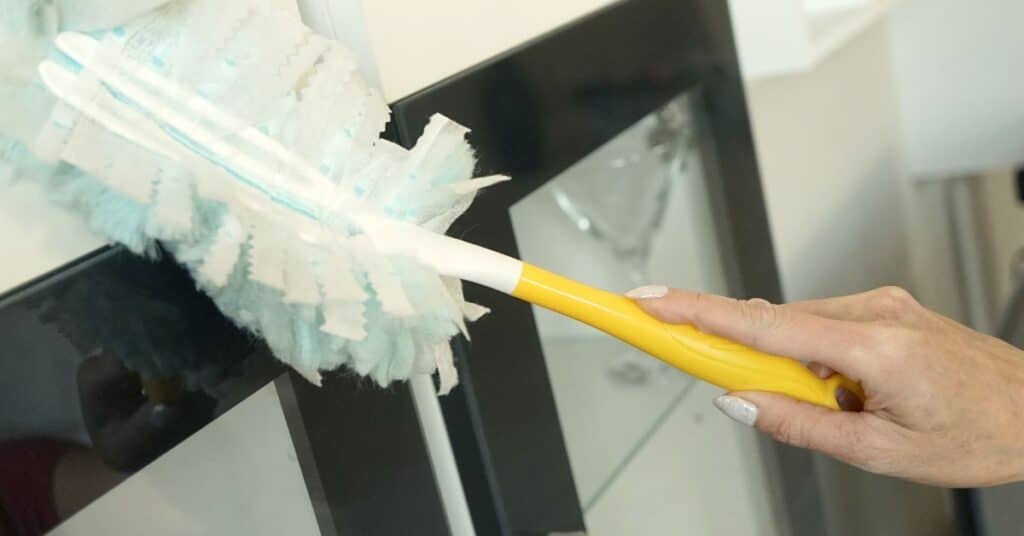When it comes to cleaning, most of us have a routine: vacuum the floors, wipe down the counters, scrub the bathroom, and call it a day. But even the most diligent cleaners can overlook certain areas that quietly collect dust, grime, and germs. These under-the-radar cleaning tasks are easy to miss, but they can make a big difference in the overall cleanliness and health of your home.
If you’re ready to take your cleaning game to the next level, this guide will help you identify those often-forgotten spots and show you how to tackle them. Whether you’re a DIY enthusiast or prefer to rely on cleaning professionals for recurring cleaning, you’ll find practical tips to keep your home sparkling from top to bottom.

Why Do We Miss These Cleaning Tasks?
It’s easy to focus on what’s right in front of us—floors, countertops, sinks—while ignoring the less obvious areas. Some spots are out of sight, others are hard to reach, and a few just don’t seem dirty until you take a closer look. But dust, allergens, and bacteria don’t discriminate. Over time, these neglected areas can impact your home’s air quality, appearance, and even your health.
1. Baseboards and Trim
Baseboards and trim are magnets for dust, pet hair, and scuff marks. Because they’re low to the ground and often hidden behind furniture, they’re easy to forget.
How to Clean: Use a microfiber cloth or a vacuum with a brush attachment to remove dust. For stubborn marks, wipe with a damp cloth and a mild cleaning solution. Make this part of your monthly or quarterly cleaning routine.
2. Light Switches and Door Handles
These high-touch surfaces are hotspots for germs and bacteria, yet they’re rarely included in regular cleaning routines.
How to Clean: Wipe down switches and handles with a disinfectant wipe or a cloth dampened with a gentle cleaner. Don’t forget cabinet handles, appliance knobs, and remote controls!
3. Ceiling Fans and Light Fixtures
Out of sight, out of mind—until you look up and see a layer of dust on your ceiling fan or light fixture. When fans are turned on, they can spread dust throughout the room.
How to Clean: Use an extendable duster or a microfiber cloth to clean blades and fixtures. For a deeper clean, carefully remove glass covers and wash them in warm, soapy water. Cleaning professionals can help with high or hard-to-reach fixtures during recurring cleaning visits.
4. Air Vents and Registers
Air vents and registers collect dust, pet hair, and debris, which can affect your HVAC system’s efficiency and your home’s air quality.
How to Clean: Vacuum vents regularly and wipe with a damp cloth. For a thorough clean, remove the covers and wash them. Consider scheduling professional duct cleaning every few years, especially if you have allergies or pets.
5. Behind and Under Appliances
Crumbs, dust, and spills accumulate behind and under your refrigerator, stove, washer, and dryer. These areas can even attract pests if left unchecked.
How to Clean: Move appliances (if safe and possible) and vacuum or sweep the area. Wipe up spills and mop the floor. If moving heavy appliances isn’t feasible, cleaning professionals can handle this task as part of a deep cleaning service.
6. Dishwasher and Washing Machine Seals
Moisture and food particles can get trapped in the rubber seals of dishwashers and washing machines, leading to mold, mildew, and unpleasant odors.
How to Clean: Wipe seals with a cloth dipped in a mixture of vinegar and water. Leave the doors open after use to allow seals to dry completely.
7. Shower Curtains and Liners
Soap scum and mildew love to cling to shower curtains and liners, but these are often overlooked during bathroom cleaning.
How to Clean: Most fabric curtains and plastic liners can be machine washed with a little baking soda and vinegar. Hang them to dry or run them through a short dryer cycle on low heat.
8. Trash Cans and Recycling Bins
Even with liners, trash cans and recycling bins can develop sticky residue and odors over time.
How to Clean: Wash bins with hot, soapy water and rinse thoroughly. Sprinkle baking soda in the bottom to absorb odors. Make this a monthly habit.
9. Window Tracks and Sills
Dust, dead insects, and grime can build up in window tracks and sills, especially if you like to open your windows for fresh air.
How to Clean: Use a vacuum with a crevice tool to remove loose debris, then scrub with a small brush and soapy water. Wipe dry with a cloth.
10. Under Furniture and Cushions
It’s easy to forget what’s lurking under your sofa, chairs, and beds. Dust bunnies, crumbs, and lost items can accumulate quickly.
How to Clean: Move furniture periodically to vacuum or sweep underneath. Remove and vacuum sofa cushions, and clean underneath them as well.
11. Toothbrush Holders and Soap Dishes
Bathrooms are full of moisture, making them a breeding ground for bacteria and mold—especially in toothbrush holders and soap dishes.
How to Clean: Wash holders and dishes with hot, soapy water weekly. For stubborn buildup, soak in a vinegar solution.
12. Pet Areas
Pet beds, feeding stations, and litter boxes can harbor odors, fur, and bacteria if not cleaned regularly.
How to Clean: Wash pet bedding weekly, wipe down feeding mats, and clean litter boxes thoroughly. Vacuum around these areas to pick up stray fur and debris.
13. Reusable Grocery Bags
Reusable bags are eco-friendly, but they can also collect bacteria from food spills and frequent use.
How to Clean: Check care labels and wash bags regularly—most can go in the washing machine. Air dry completely before storing.
14. Electronics and Keyboards
Phones, tablets, keyboards, and remote controls are touched constantly but rarely cleaned.
How to Clean: Use disinfectant wipes or a cloth dampened with rubbing alcohol. For keyboards, use compressed air to remove crumbs and dust.
15. Walls and Switch Plates
Walls, especially near light switches and doorways, can accumulate fingerprints, smudges, and dust.
How to Clean: Wipe with a damp microfiber cloth and a mild cleaner. Pay special attention to high-traffic areas and spots at kids’ or pets’ height.
Making Under-the-Radar Cleaning a Habit
It’s easy to feel overwhelmed by all these extra tasks, but you don’t have to tackle them all at once. Here are some tips to make under-the-radar cleaning manageable:
- Create a Checklist: Add these tasks to your monthly or seasonal cleaning schedule.
- Set Reminders: Use your phone or calendar to remind you of less frequent chores.
- Break It Down: Tackle one or two tasks each week rather than trying to do everything in a single day.
- Get the Family Involved: Assign tasks to family members to share the load.
When to Call Cleaning Professionals
If you’re short on time, have mobility challenges, or just want a truly thorough clean, cleaning professionals can help. They’re trained to spot and address these under-the-radar tasks as part of recurring cleaning or deep cleaning services. Professional cleaners have the tools and expertise to reach high, low, and hidden areas, ensuring your home is clean in every corner.
Final Thoughts
A truly clean home goes beyond the obvious. By paying attention to these often-missed cleaning tasks, you’ll create a healthier, fresher, and more inviting space for yourself and your loved ones. Whether you tackle these chores yourself or rely on cleaning professionals for recurring cleaning, making under-the-radar cleaning a regular part of your routine will make all the difference.
So next time you finish your usual cleaning routine, take a look around—there’s always a hidden spot waiting for a little extra attention. Your home (and your peace of mind) will thank you!
About The Author
At Prestigious Cleaning Services, we proudly deliver high-quality cleaning solutions tailored to the needs of Folsom, CA and surrounding communities. Serving El Dorado Hills, Rancho Cordova, Orangevale, Sacramento, Fair Oaks, and Cameron Park, CA, our experienced team specializes in everything from routine bi-weekly and maintenance cleaning, to deep cleaning/spring cleaning, move-in/move-out services, renovation cleanup, as well as commercial cleaning services.
